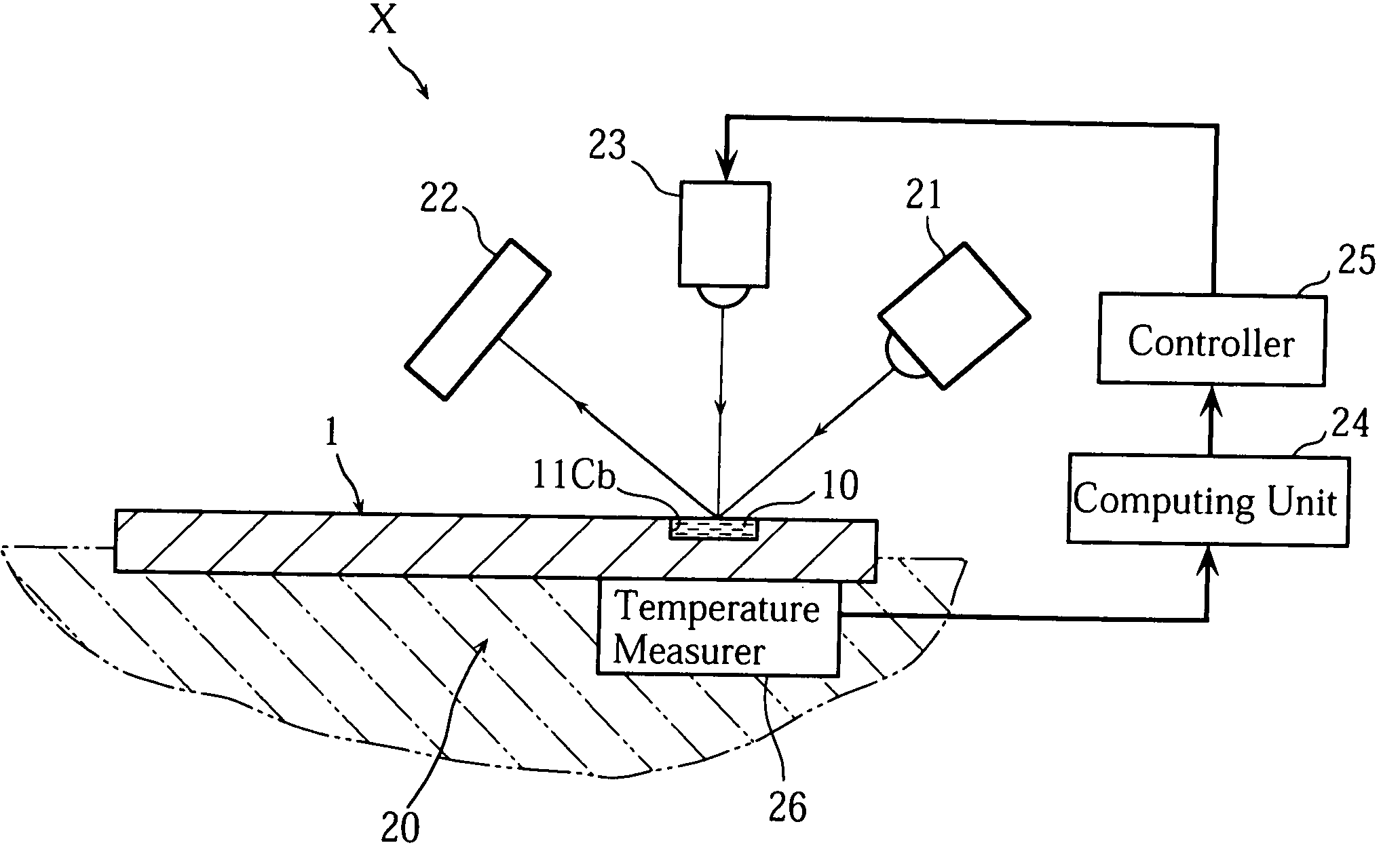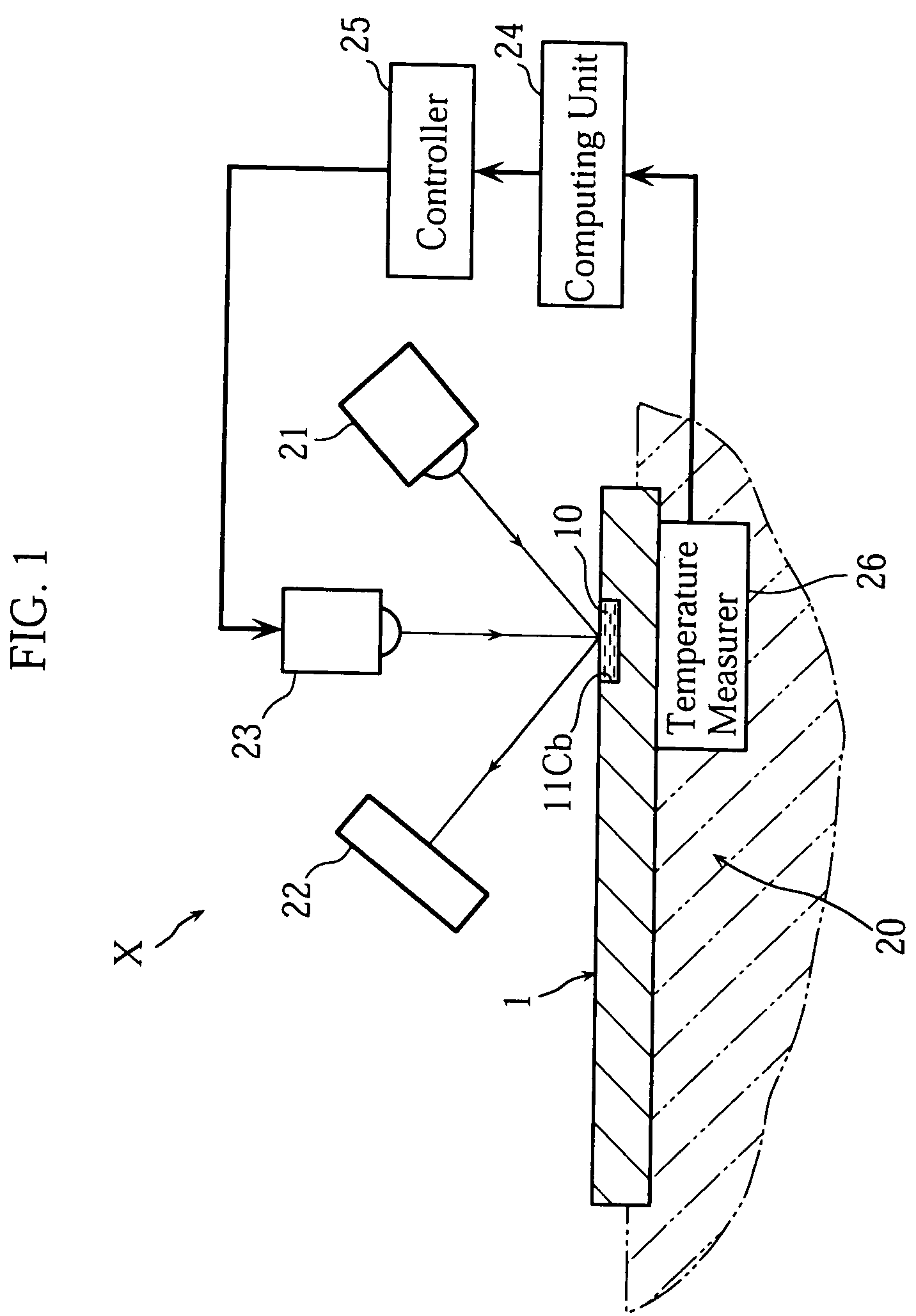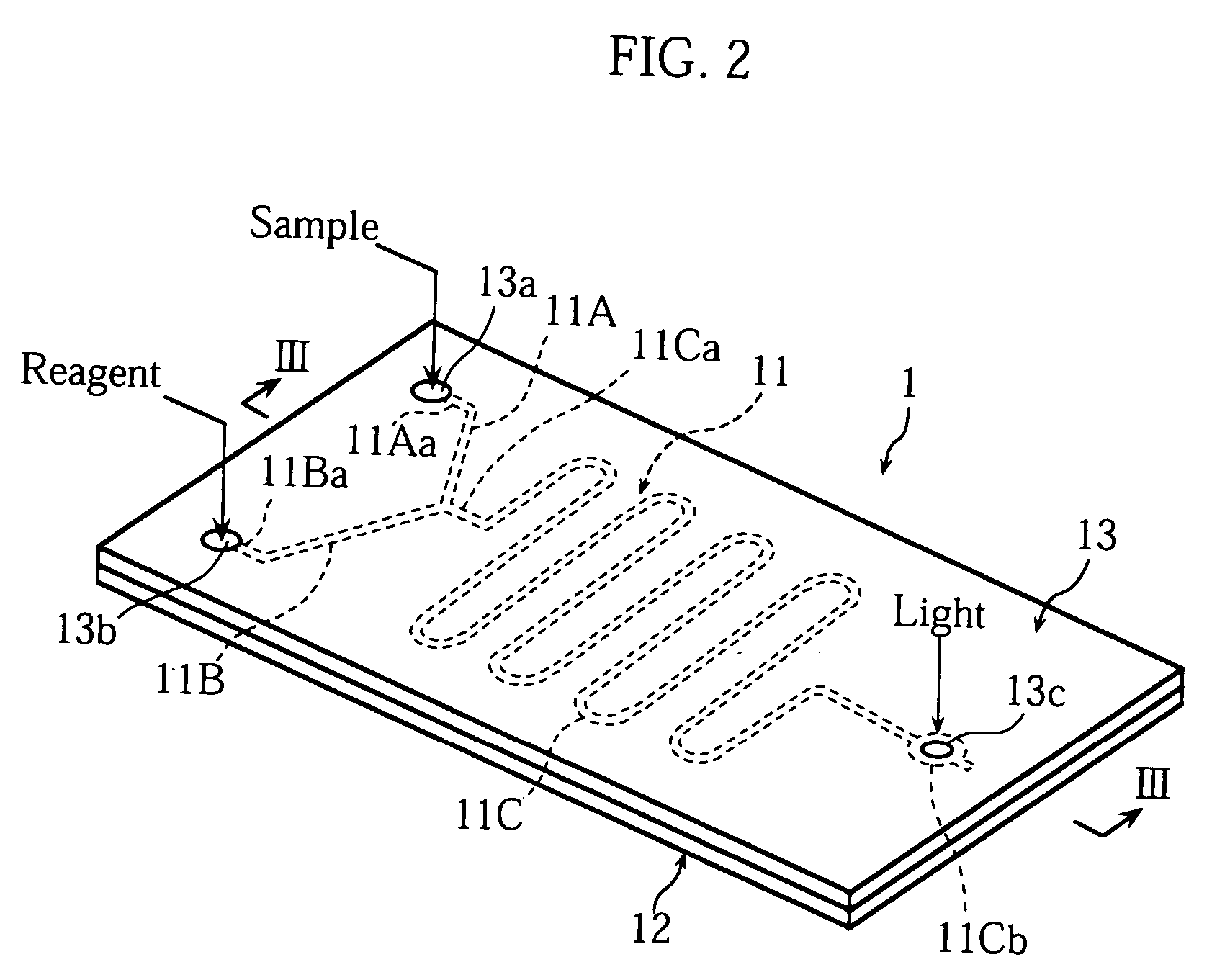Method for adjusting temperature of analyzing tool and analyzing device having function of adjusting temperature
a technology of analyzing tool and analyzing device, which is applied in the field of analytical tools, can solve the problems of prior art temperature adjustment methods, high power consumption, and high power consumption, and achieve the effect of low power consumption and without increasing the size of the analyzing devi
- Summary
- Abstract
- Description
- Claims
- Application Information
AI Technical Summary
Benefits of technology
Problems solved by technology
Method used
Image
Examples
Embodiment Construction
[0025] Preferred embodiments of the present invention will be described below in detail with reference to the accompanying drawings.
[0026] An analyzing device X shown in FIG. 1 has an analysis function for analyzing a sample by using an analytical tool 1, and a temperature adjustment function for adjusting the temperature of a liquid component 10 retained at a measurement portion 11Cb of the analytical tool 1. The analyzing device includes a mount portion 20, a measurement light source 21, a light receiver 22, a heating light source 23, a computing unit 24, and a controller 25.
[0027] The mount portion 20 serves to hold the analytical tool 1. A temperature measurer 26 for measuring the temperature of the liquid component 10 retained in the analytical tool 1 is embedded in the mount portion 20. The temperature measurer 26 is so arranged as to be located directly below the liquid component 10 (measurement portion 11Cb) retained in the analytical tool 1 when the analytical tool 1 is m...
PUM
| Property | Measurement | Unit |
|---|---|---|
| temperature | aaaaa | aaaaa |
| temperature | aaaaa | aaaaa |
| thermal energy | aaaaa | aaaaa |
Abstract
Description
Claims
Application Information
 Login to View More
Login to View More - R&D
- Intellectual Property
- Life Sciences
- Materials
- Tech Scout
- Unparalleled Data Quality
- Higher Quality Content
- 60% Fewer Hallucinations
Browse by: Latest US Patents, China's latest patents, Technical Efficacy Thesaurus, Application Domain, Technology Topic, Popular Technical Reports.
© 2025 PatSnap. All rights reserved.Legal|Privacy policy|Modern Slavery Act Transparency Statement|Sitemap|About US| Contact US: help@patsnap.com



